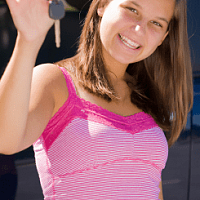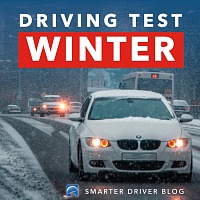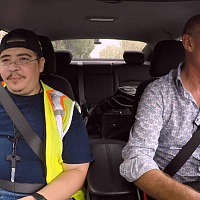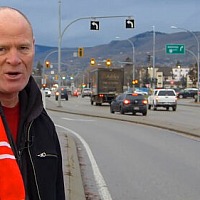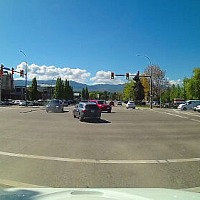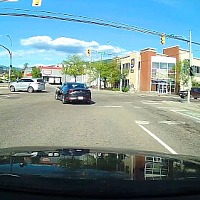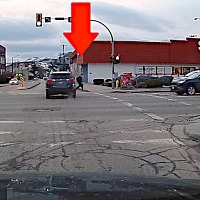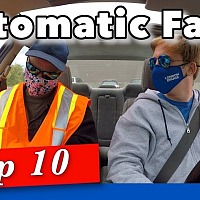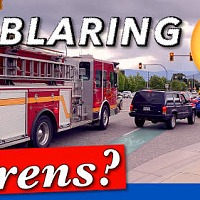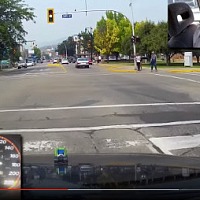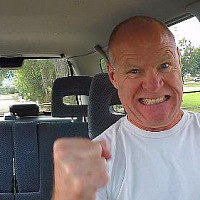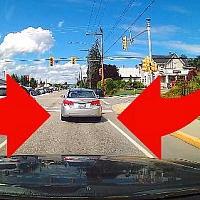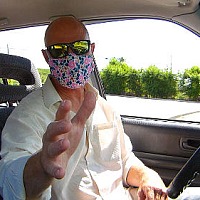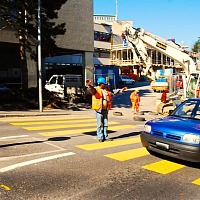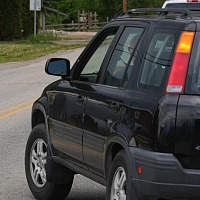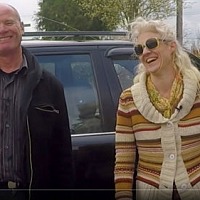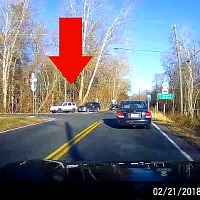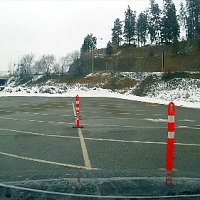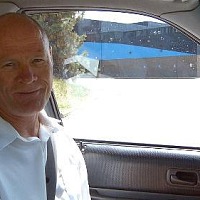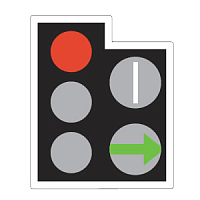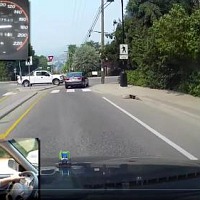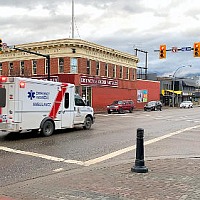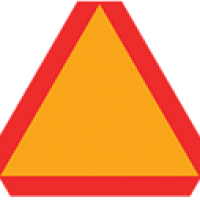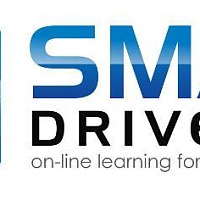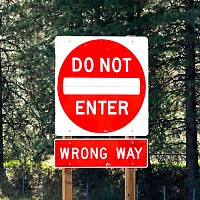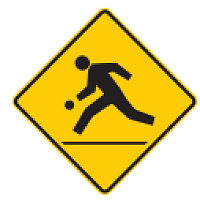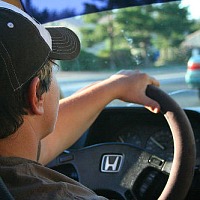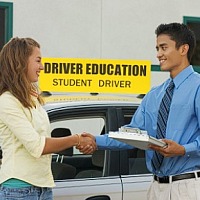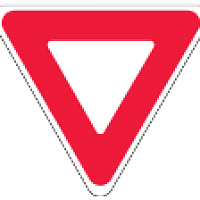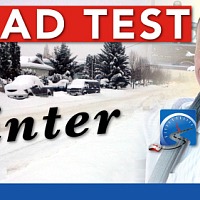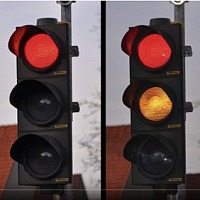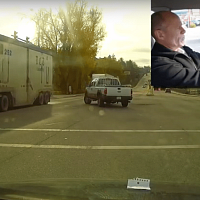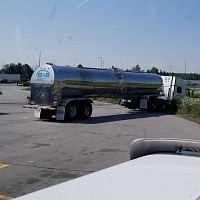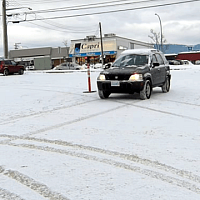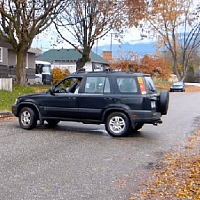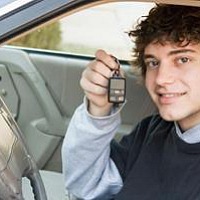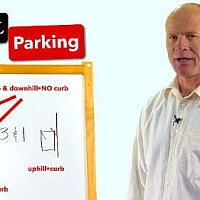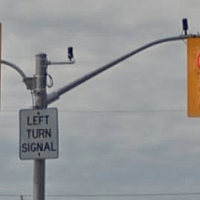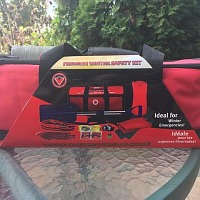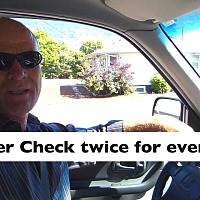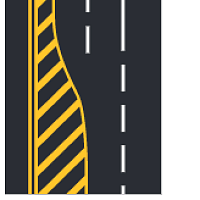Want to know how to pass your driver's licence road test first time? Get step-by-step instructions here!
How to Pass a Driver's Licence Road Test First Time
Closed Caption
Introduction
Hi there smart drivers, Rick with Smart Drive Test.
Ooooooohhh, its test day.
You can feel the jitters, you can feel the anxiety.
Yes indeed!
I had a comment from Saber-toothed, he wanted me to do a mock road test to show him and others what they needed to do on road test day.
Breath...
On a road test, remember the first principle: breathe - in through the nose, out through the mouth, and breathe all the way to your navel.
[DEMONSTRATING THE BREATHING TECHNIQUE]
This will help you to relax.
It will help you to relieve some of the tension and some of the anxiety that you're going to feel on test day.
If you can relax you're going to do better on your test.
And I know all about the jitters and all about the anxiety because I've done no less than a dozen road tests: different higher class licenses, my car license when I was 16, and I had to do two or three tests when I got my instructors license.
Every time I was anxious.
Now keep in mind that for the purposes of your road test, your job is to take away the examiners right to fail you.
That's all you have to do - nothing more, nothing less.
And if you practice, practice, practice, up until road test day, you're going to do what you practice, and that's not going to be a hard job.
So stick around, we're going to do a mock road test.
We'll be right back with that information.
Showing Up Early
Hi there smart driver welcome back.
Rick with smart drive test talking to you today about how to do a mock road test.
The first thing you need to do, is you need to show up at least 45 minutes to 30 minutes early for your appointment
Because you have to go into the driving licensing center and you have to check in.
Identification, Licence & Money
Now when you come to the licensing center, make sure that you bring identification - you're going to need at least two pieces of identification, and what I tell students is to bring three pieces of identification in case for whatever reason one piece isn't accepted.
So bring three pieces of identification and don't forget your money.
Yes, it's not free!
You have to pay a fee, whether you're at the DMV (Department of Motor Vehicles), the MTO (Ministry of Transportation of Ontario) in Ontario, or ICBC (Insurance Corporation of British Columbia) here in British Columbia.
So make sure you bring money.
Pre-Trip Inspection
As well, before you leave in the morning, whether you're with the school or you're taking your own vehicle, make sure you do a pre-trip inspection on your vehicle before you show up for road test day.
Make sure all the lights are working, the horn is working, the seatbelts are working, the seats are secure.
Make sure all the rubbish is out of the car, because you are not going to get an examiner in your vehicle if you have--you know-- fast food containers up to the knees in in the footwells of your vehicle.
Clean Your Vehicle
So make sure you clean it out and keep it clean.
It's going to leave a better impression with the examiner.
As well, leave Ruffy at home - don't bring your pets, don't bring the cat, don't have anybody else in the vehicle.
It is just you and the examiner.
So when you show up to the road test, you go in and check in.
Just one other note about pre-trip inspection - if you're going with the driving school, ensure that you ask the driving instructor if in fact he or she did do a pre-trip inspection on the vehicle in the morning, because oftentimes if you've got a signal our, for example, or brake light they will not let you go on a road test.
But if you detect that during the pre-trip inspection before you show up for your road test it's easily fixed and you can go for your road test and it's not going to create more angst on the day of your road test.
Get Your "How to Pass Your Driver's Test First Time"
• FEAR :: Learn the correct skills, abilities, and techniques that are required to pass your driver's test;
• SELF-CONFIDENCE :: Get the exact skills from a licensed driving instructor that will guarantee your success;
• CONFUSION :: Cut through the conflicting and incorrect information;
• QUALIFIED :: Smart Drive Test has helped 1000s to pass their drivers' test...and we can help you!
So you go in, check in, wait--often in the vehicle--the examiners going to come out and find the vehicle - he or she is going to go through a pre-trip inspection with you.
They're going to get you to check the signals, the lights, the windshield wipers and the horn.
The examiner is going to do that little mini pre-trip inspection.
Oftentimes, what they'll do is, they'll tell you to roll down your window and they'll indicate what they want you to do: left signal, right signal, brake lights, those types of things.
If the vehicle doesn't pass a pre-trip inspection they are not going to take you out on a road test.
The Vehicle Doesn't Meet Standards
And unfortunately, I've seen that time and time again waiting at test centers for students to come back on licenses.
And one of the most awful ones I've seen is somebody that show up with an Alberta vehicle-- and they're not required to have a plate on the front in Alberta--they borrow their Uncle's car or whatever.
They show up and because they don't have a licence plate on the front, in British Columbia they can't go for the road test because it doesn't pass standards that are set out in policy by that licensing center.
Designated Parking
So make sure you do a pre-trip inspection.
I can't stress that enough on test day when you show up the licensing center.
Oftentimes there's going to be designated parking - here in Vernon, British Columbia, Canada we don't have designated parking, it's street parking.
And a lot of the smaller licensing centers, it's going to be street parking.
They're not gonna have a parking lot with their own designated parking.
But if they do have designated parking for licensing exams, make sure you back into the space because you're just too nervous at the beginning of the test.
Back Into the Space
So back into the space, and if you go with the driving school they're going to make you back in any way.
That way it gives you a bit of practice of where you have to back in -hat way you can drive out at the outset of your test.
At the end of the road test, when you come back, the driving examiner will make you back into the space.
Here in Vernon, BC, Canada, I'm not going to do that because it's street parking and they don't have designated parking.
But know that at some of the center's you're going to have designated parking so make sure you park there for the purpose of the road test so the examiner can find you and take you out on your road test.
Soldier Forward!!
One important note for road test day - if you make a mistake keep going.
Don't dwell on the mistake because if you dwell on the mistake you're going to make more mistakes.
So just let it go - quickly carry on with the road test.
You do not stop until the examiner--he or she--tells you to stop.
Otherwise just keep going.
When you get back to the examination office they will indicate whether they saw it or not.
Because sometimes they may not even see the mistake that you have made.
They may be looking out the window or thinking about something else.
Oftentimes, there's a chance that they didn't even see it, so just keep going.
Practice, Practice, Practice
Again, as I said, we do what we have practice, so if you practice, practice, practice, up to road-test, you're going to be great.
The Driving Examiner Spiel
As well, what they're going to do - they're going to get in the vehicle, the examiner is going to give you the little spiel - they're going to tell you that they will give you plenty of advanced notice of where to turn at the intersection.
Oftentimes, what they're going to say is, "At the intersection, turn left." And I'll give you a couple blocks notice.
If it's just an intersection, it's not a controlled intersection.
As well, they'll say: "At the controlled intersection, turn right."
When they say "controlled intersection," what they're doing is getting you to sort out whether it's a stop sign, a yield, or traffic light and how to deal with that situation.
And know that if it's a controlled intersection, it's a stop sign, a traffic light, or a yield.
So that's the other information that they're going to give you.
The examiner is going to tell you to obey all traffic signs and obey all laws when you're driving.
So again, it comes back to my tagline:
"Pick the best answer, not necessarily the right answer."
As well, if you end up with an emergency vehicle on your road test, STOP, if you're not already stopped.
Make sure you pull over to the nearest shoulder and stop as soon as possible.
And do the best you can - make sure you do lots of shoulder checking.
And essentially, what we're going to do is, we're gonna fire up the cameras here, we're gonna go for a drive!
The Road Test
Alright, so the examiners gotten in the car and given you the spiel.
Obey all the traffic signs; he or she will give you plenty of notice about directions.
At the intersection turn left - turn right.
Obey all the traffic laws, and all the rules.
And he or she has indicated for you to proceed.
We're going up to the intersection and turning right and then turn left at the next intersection.
So we're going to proceed - mirror, signal, shoulder check.
It is clear to go.
Shoulder check again immediately before leaving.
Mirror, signal, shoulder check turning right.
Moving to the right of our lane.
Stopping just when the stop line moves under the front of the vehicle.
We can't see, so we're going to proceed forward and treat the intersection as a yield.
I can see - we're proceeding.
We have a pedestrian walking across the road and we're just going to slow down until the pedestrian attains the curb.
I'm stopping so the stop line just rolls under the front of the vehicle.
And we've positioned the vehicle to the left of our lane, but still right of the centre line.
And again, I can't see because of the parked vehicles here, so I need to creep forward.
That vehicle has preceded; the other vehicle across from me has the right-of-way.
[WAITING] And the person really doesn't know the traffic rules because they're going straight.
Straight through vehicle have the right-of-way over turning vehicles.
And again, I got caught out here because there was a car coming.
Fortunately there's nobody in the intersection.
And that's going to happen on your road test.
I'm scanning the railway crossing there.
The examiner has indicated for me to proceed straight through the controlled intersection here.
Going back to the previous left-turn: you're going to have to move out into the intersection and some times you're going to have to stop in the lane.
You're already committed to the intersection, but you can't pull out across in front of that car that was coming.
If in Doubt, Just Stop!!
You couldn't see it in the cameras because it was coming from the right side of my vehicle, but you're going to have to do that: Just STOP, because you need to give the right-of-way to other traffic.
Or otherwise you're going to risk a crash.
So here, you can see at the intersection it's busy.
And I stopped so I can see the tires of the vehicle in front of you making clear contact with the road.
When you're stopping in traffic that's where you want to stop.
And if you're driving a manual transmission, you cannot roll backwards on a road test.
and it is not North American culture to put on the handbrake.
In the UK (United Kingdom) and Europe they have a driving culture of driving manuals where when they stop they put on the handbrake.
We don't do that in North America.
So just know that difference.
And I have to slow here due to the turning vehicle.
And we're scanning the roundabout to the left and to the right.
And we signal - the examiners has indicated that he or she wants us to go straight through.
Scanning the crosswalk, scanning the crosswalk, scanning the intersections and assuming 50 kilometers an hour or 30 miles an hour as you will be doing in the United States.
Construction Zone
And I have temporary work signs here - you can see it says, "Prepare to Stop" And we're slowing right down because we have to do a deviate out to the right and the flagger has indicated for me to stop.
I've slowed right down, and again you can see the playground sign here that's 30 kilometers an hour.
So it's 30 kilometers an hour past the playground.
And that is kind of a deceiving sign because it's a cautionary sign that warns you of the playground, but it's a regulatory sign underneath the bottom of the playground sign.
So you need to make sure that you do 30 kilometers an hour (20 mph) past the playground.
if you exceed the speed limit for any length of time, that's an automatic fail on a road test.
We're past the park now, so we can resume 50 kilometers an hour (30 mph).
The examiner has told us to go left at the controlled intersection.
School Zone
We stop at the stop line.
As you can see, the stop line is quite faded here.
Stop the vehicle when it just rolls underneath the front of the car.
It's an all-way stop, so we can see all the traffic has stopped.
And we're in a school zone, which is in effect from 8am to 5pm.
And again, it's 30 kilometers an hour in the school zone (20 mph).
Scanning the intersection, scanning the crosswalk - 30 kilometers an hour.
The examiner has indicated to go left at the controlled intersection.
And we're stopping behind the traffic so we can see the tires making clear contact with the pavement.
And we need to come to a complete stop when the stop line just rolls under the front of the vehicle.
We can't see, so we creep forward.
We have traffic - the way is clear and we proceed - shoulder checking.
And the examiner has indicated to go right at the next intersection.
I wasn't sure what that pedestrian was doing so I covered the brake and actually slowed down a little bit.
Mirror, signal, shoulder check for the right turn.
Steering through the intersection, scanning my mirrors, making sure there isn't any traffic.
Parallel Parking
The examiner has indicated to go right at the next intersection.
Mirror, signal, shoulder check and shoulder check again immediately before turning.
And the examiner has indicated that he or she wants you to parallel park off the red truck.
And we can see that the red truck is wide, which indicates that we're going to have to go deeper into the space.
So we pull up approximately three feet, just so we can see the back corner in the back window.
I put the transmission into reverse immediately.
I activate my right signal.
I pick out my 45° marker, which is the front door of that house.
Scan behind me, and turn the steering wheel all the way to the right until I'm facing directly on my 45° mark, which is right there.
I bring the steering wheel back to straight and back up until I'm most of the way down the hood on this one because the truck is really wide.
So right about there - all the way to the left.
Scanning, scanning, scanning and I'm straight into space, and I pull forward until I can just see the top of the bumper - right there.
And I tell the examiner that I'm done.
I secure the vehicle - into PARK, parking brake on and I would turn the vehicle off and tell the examiner that I'm finished.
And usually the examiner will open the door and see how far you are from the curb.
So that's how you parallel park and now the examiner will tell you, "Okay, we're going to resume.
Put your foot on the brake pedal, release the parking brake, put the transmission into reverse for an automatic and a manual.
Look behind you and you're going to have to move back, we roll back a bit because we're on a hill.
To leave the space mirror, signal, shoulder check.
Nothing coming - shoulder check again immediately before proceeding.
And we proceed.
And the examiner has indicated that we go right at the controlled intersection.
School Zone
Mirror, signal, shoulder check.
I'm moving to the right of our lane and stopping so the stop line just disappears under the front of the vehicle.
I can't see, so I move forward and treat it like a yield.
The way is clear and we can proceed.
And we're approaching a 30kph, so we slow to 30 kilometers an hour.
And the examiner has told us to go right again at this STOP sign.
And we're in school zone.
And the school's on the right there.
We creep out - no one there and we proceed.
And 30 kilometers an hour is the speed because we're in a school zone.
No one at the crosswalk.
And in British Columbia, they don't put "End School Zone" signs in, so we look for the back of the other pentagon sign, which is right there on the left, which indicates that we can now resume speed.
And we resume speed to 50kph (30 mph).
And the examiner has indicated for us to go left.
We turn left here - the way is clear, and we can go.
And we're going slow because the road is narrow and there's lots of parked vehicles.
And again, we're back into the 30kph playground zone.
Stopping At Crosswalk
Mirror, signal, shoulder check - the examiner's told us to go right.
We stop so the stop line just goes under the front of the vehicle.
We can't see so I move forward so I can see.
Okay.
And there's pedestrians in the crosswalk.
And the examiner's told us to go left at this intersection.
And we stop so we can see the tires of the vehicle making clear contact on the pavement in front of us.
And it's still 30 kilometers an hour - 30 kilometers an hour through the playground until we're to the end of the playground, which is on our left here.
And we have construction workers with the slow sign, but he's not really paying attention.
We're still doing 30 kilometers an hour.
It's resumed to 50 kilometers an hour now (30 mph) that were past the playground and past the construction workers.
I'm scanning the intersections - we have a pedestrian on the left - the pedestrian is good.
The road is clear, and I have a controlled intersection up here.
The examiner has indicated for us to proceed straight through.
On the other side of the controlled intersection we have a school zone sign.
It's not a reduced speed, it's just indicating that there is a school in the area.
The traffic is clear and I've come to a complete stop, and we can proceed.
And it's faint here with the road marking.
You can see that there is a bicycle lane here on the right and we move over to the left and scanning.
And the examiner has indicated that he or she wants us to park on the right here, just past the intersection.
Hill Parking (Downhill with a Curb)
Mirror, signal, shoulder check and we proceed past the intersection.
Mirror, signal, shoulder check into the space.
And just before the vehicle straightens, we turn the steering wheel all the way to the right and then all the way to the left because we're parking downhill with a curb.
And I allow the vehicle to roll into the curb until the front tire touches the curb.
Put the transmission into the first gear or PARK.
Apply the parking brake and tell the examiner that you're finished.
The examiner will tell you to proceed.
Put your foot on the brake pedal, release the parking brake.
Mirror, signal, shoulder check, and turn the wheels to the left.
And when it is way is clear, we proceed.
It's just starting to become winter here and the windows are becoming fogged up.
You may have to work the defrost controls as I just did they to keep your vision and being able to see and communicate to other drivers.
Mirror, signal, shoulder check, and I'm stopping so the stop line just rolls under the front of the vehicle.
We bring the vehicle to a complete stop.
We can see and wait for that vehicle because it's going fairly fast.
Speed Management
Shoulder check immediately before proceeding, and proceed into the right hand lane.
I'm going downhill so our speed is going to accelerate.
So we're monitoring our speed - 50 kilometers an hour (30 mph).
50 kilometers an hour or 30 miles an hour in the city, unless otherwise posted.
Mirror, signal, shoulder check - we have a pedestrian.
The pedestrian is looking around so we're just going to slow down and make sure that the pedestrian is staying there.
[SCANNING THE INTERSECTION] No vehicles, it's a yield sign, so we don't have to stop.
And again there are no speed signs along here, so it's 50 kilometers an hour (30mph) unless otherwise posted.
And it's easy to lose your speed here because it's downhill and the traffic flow is much higher than 50 kilometers an hour.
So it's important, especially on a road test, that you practice these areas because you're going to get caught out if you start following traffic or you get distracted.
And you're going to go faster than what you should and this is the reason that yes, I'm reshooting this because the first time I came down here I was speeding.
I was following the other traffic and was narrating on the camera and not focusing on my driving and reverted to social driving.
So it's 50 kilometers an hour! The examiner has indicated that at the second traffic that he or she wants us to turn left.
And again I'm speeding! So see, I started following the traffic and my speed went up.
Yet, that's okay - you're generally not going to lose demerits for that if you catch yourself right away and bring your vehicle back to the posted speed limit.
The examiner will not assign demerits for that as long as that he or she knows that you're controlling the vehicle and working to attempt to control the speed.
And the examiner's indicated that we're going to turn left at the next traffic light.
Not Blocking Other Traffic
And we need to move over to the left-hand lane so we turn our signal on to ask other drivers to help us out.
And again the vehicle behind us has created a gap for us because we asked to move over.
And we leave our signal on all the way into the other lane.
And we cancel our signal when we get into the other lane.
And the traffic is stopping and there's somebody here that wants to turn left - turn right in front of us.
And we're not going to block this intersection.
So we're gonna stay back.
And the other vehicle has proceeded.
The traffic in front of us is moving forward and we can proceed.
Remember, it doesn't take any time out of your day to be nice other people.
And the overhead lane signs indicate lane use here.
The right-hand lane goes straight through.
Mirror, signal, shoulder check.
The examiner indicates that we want to go right at the next intersection.
We put our right signal on immediately.
Mirror, signal, shoulder check and move across into the other lane.
Mirror, signal, shoulder check, and shoulder checking across the bicycle lane.
We have a pedestrian on the island - the traffic island, but it looks like they're going the other way.
There's nobody in the crosswalk - the way is clear.
We have a yield sign so we can proceed.
And it's 50 kilometers an hour (30 mph).
Turning Right
The light is green.
The pedestrian is good.
Nothing at the crosswalks, nothing at the intersections.
50 kilometers an hour - I'm travelling at just under 50 kilometers an hour 30 miles an hour in the United States.
Nothing at the intersection - pedestrians are all good.
The examiner's indicated we want to go right at the next intersection.
Pedestrian is good.
Mirror, signal, shoulder checking approximately half a block from the turn.
Moving the vehicle to the right of our lane and stopping when the stop line is just under the front of the vehicle.
We're going to move forward so we can see.
If the way is clear we can go, but we're not proceeding into the intersection in case pedestrian show up.
Kids are all good - looks like the traffic is going to clear.
And sometimes you're going to need to lean forward so you can see the other traffic without actually moving the vehicle forward.
And the way is clearing.
The way is clear - shoulder check again and we proceed.
The examiner's indicated that we go left at the intersection.
We mirror, signal, shoulder check into the turning lane as soon as possible.
And I'm stopping so the front STOP line rolls just under the front of the vehicle and we come to a complete stop.
And the way is clear and we proceed.
Mirror, signal, shoulder check into the parking space.
And pull up, stop, into PARK, parking brake on.
Cancel your signal and turn the vehicle off.
And you are done your road test.
And at this juncture, the examiner will indicate whether you have passed or failed and give you feedback.
Conclusion
Quick review of road test day.
Remember to breathe because you're going to be anxious you're going to be tense.
As well, your job on road test day is to do nothing more than to take away the examiners right to fail you.
In other words, if you've practiced--because driving is not a spectator sport-- and practice well, you're going to do what you've practiced.
For the purposes of the road test.
Speed and space management are you're two biggest components of your road test.
Maintain the posted speed limit or the traffic flow, whichever is less.
And stay away from other traffic, road users, and fixed objects, and pedestrians.
Before you turn when pedestrians are present, you're going to need one lane of traffic between you and pedestrians.
Stop at the correct position at stop signed intersections and obey the speed limits.
Especially when you get into school zones, it's going to be 30 kilometers an hour (20mph) or if you get around a playground that has a speed sign underneath the playground cautionary sign.
It's a kind of a tricky sign because it's a cautionary sign with a small rectangular regulatory sign underneath.
Parking, slow speed manoeuvres - don't get too worried if you're parallel park and you hit the curb; just pull ahead and adjust the vehicle.
Hill parking - remember the three-and-one rule: three times it's in towards the shoulder of the road.
The only time that it's out towards the center of the road is uphill with a curb.
And if you have a curb, you're going to secure the vehicle against the curb.
Three-point turns, as well there's another video here on the channel.
So those are your main slow speed manoeuvres that you're going to have to do.
U-turns, three-point turns, parallel park and hill parking.
Otherwise speed and space management, stopping at controlled and uncontrolled intersections - you don't have to stop uncontrolled intersections if the way is clear, but speed and space management.
Prove that you're safe and as I said, if you're not taking driving lessons go out and do a mock road test with a driving school before road test day.
They will be able to identify the weaknesses in your preparation for road test and you'll be able to fix that and strengthen that.
As well, shoulder check, shoulder check, shoulder check - every time that you move the vehicle laterally, make sure you shoulder check.
And if there is designated parking at the licensing center, back into the space that way you can drive out.
At the end of the test they're going to make you back into the parking space as a demonstration of due care and control the vehicle and that you can reverse park the vehicle.
Okay, some of these bigger licensing centers are going to be busy, so go in and practice parking on the weekends.
There's no one there on the weekend, so you can go in and practice parking in these parking lots on the weekend.
Question for my smart drivers:
Do you have any tips for drivers preparing for a road test?
Leave a comment down in the comment section there, all that helps out the new drivers working towards getting their license.
I'm Rick with Smart Drive Test Thanks very much for watching.
If you like what you see here share, subscribe, leave a comment down in the comment section.
As well, hit that thumbs up button.
Check out all the videos here on the channel if you're working towards a license or starting a career as a truck or bus driver - lots of great information here.
As well, head over to our website where there's more great information.
Stick around to the end of the video, some funny bits and links to the other videos and to my website.
Thanks again for watching - good luck on your road test.
And remember, pick the best answer not necessarily the right answer.
Have a great day.
Bye now.
Blooper
It's test day - Oh my God breathe [ERRATIC BREATHING].
What did that guy say in that video? What do I do? Okay, okay I ccc....I can do this, I can do this! Okay, here we go!



